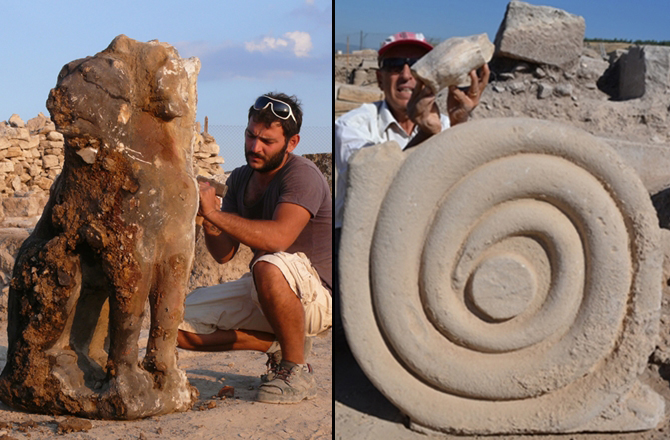Discovery News
November 21, 2013

Archaeologists digging in Turkey have found the guardians of the “Gate to Hell” — two unique marble statues which once warned of a deadly cave in the ancient Phrygian city of Hierapolis, near Pamukkale.
Known as Pluto’s Gate — Ploutonion in Greek, Plutonium in Latin — the cave was celebrated as the portal to the underworld in Greco-Roman mythology and tradition. It was discovered in March by a team led by Francesco D’Andria, professor of classic archaeology at the University of Salento.
“The statues represent two mythological creatures,” D’Andria told Discovery News. “One depicts a snake, a clear symbol of the underworld, the other shows Kerberos, or Cerberus, the three-headed watchdog of hell in the Greek mythology.”
Rolled onto itself, the snake looks threateningly toward anybody trying to approach it, while the 4-foot-tall Kerberos resembles the Kangal, the Anatolian shepherd dog.
“It’s a pretty scary statue,” D’Andria said.
The sculptures were found as archaeologists further excavated the area where in March they unearthed the remains of the Plutonium, which included an inscription dedicated to the deities of the underworld — Pluto and Kore.
The dig revealed the source of the thermal springs, which produce the famous white travertine terraces.
“Pamukkale’s springs originate right from this cave,” D’Andria said.
